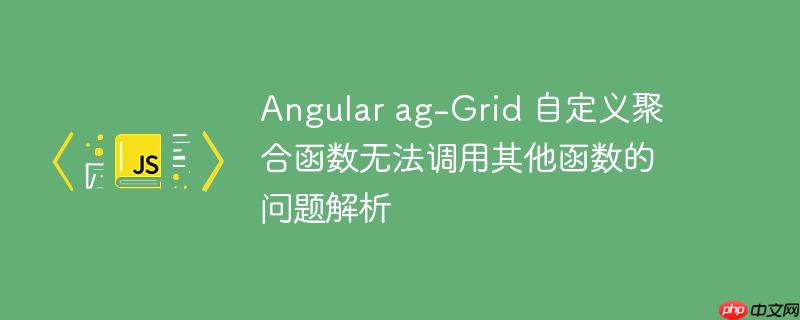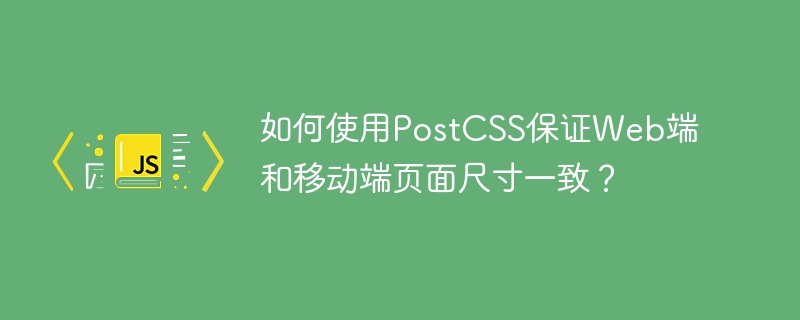
本文旨在解决 angular ag-Grid 中自定义聚合函数无法调用组件内其他函数的问题。通过分析 this 上下文的丢失原因,提出使用箭头函数来正确捕获 this 引用的解决方案,并提供示例代码进行演示。本文将帮助开发者避免在 ag-Grid 中使用自定义聚合函数时遇到的常见问题。
问题根源:this 上下文丢失
在使用 Angular ag-Grid 时,我们经常需要自定义聚合函数来实现特定的数据统计需求。然而,在自定义的聚合函数中调用组件内的其他函数时,可能会遇到无法调用的问题。这通常是由于 this 上下文的丢失导致的。
ag-Grid 的聚合函数本质上是回调函数,由 ag-Grid 引擎在特定的上下文中调用。当回调函数被调用时,其 this 值可能与组件实例的 this 值不同,导致无法访问组件内的其他函数或属性。
解决方案:使用箭头函数
解决 this 上下文丢失问题的常用方法是使用箭头函数。箭头函数会捕获其定义时所在上下文的 this 值,从而确保在回调函数中可以正确访问组件实例的成员。
以下是一个示例:
import { Component } from '@angular/core'; import { ColDef, GridReadyEvent } from 'ag-grid-community'; import 'ag-grid-community/styles/ag-grid.css'; import 'ag-grid-community/styles/ag-theme-alpine.css'; @Component({ selector: 'app-my-grid', template: ` <ag-grid-angular style="width: 600px; height: 300px;" class="ag-theme-alpine" [columnDefs]="columnDefs" [rowData]="rowData" (gridReady)="onGridReady($event)" ></ag-grid-angular> `, }) export class MyGridComponent { public columnDefs: ColDef[] = [ { headerName: 'A', field: 'a', rowGroup: true }, { headerName: 'B', field: 'b', width: 250, aggFunc: this.aggFunc }, ]; public rowData: any[] = [ { a: 'Group 1', b: 10 }, { a: 'Group 1', b: 20 }, { a: 'Group 2', b: 30 }, { a: 'Group 2', b: 40 }, ]; constructor() {} onGridReady(params: GridReadyEvent) { // 可选:在这里进行网格初始化操作 } // 使用箭头函数定义聚合函数 public aggFunc = (params: any) => { this.anotherFunc(); // 调用组件内的其他函数 let sum = 0; params.values.forEach((value:number) => { sum += value; }); return sum; }; public anotherFunc() { console.log('Hello from anotherFunc!'); } }
在上述示例中,aggFunc 被定义为一个箭头函数。这样,在 aggFunc 中调用 this.anotherFunc() 时,this 值将正确指向 MyGridComponent 实例,从而可以成功调用 anotherFunc 函数。
最佳实践
- 始终使用箭头函数定义回调函数: 为了避免 this 上下文丢失的问题,建议在定义 ag-Grid 的回调函数(例如聚合函数、单元格渲染器等)时,始终使用箭头函数。
- 避免在聚合函数中进行复杂操作: 聚合函数应该尽可能保持简洁,只负责数据的聚合计算。复杂的逻辑应该放在组件的其他方法中进行处理。
- 注意性能: 频繁调用的聚合函数可能会影响 ag-Grid 的性能。在设计聚合函数时,需要注意性能优化,避免不必要的计算。
总结
通过使用箭头函数,我们可以有效地解决 Angular ag-Grid 中自定义聚合函数无法调用组件内其他函数的问题。理解 this 上下文的丢失原因,并采取相应的解决方案,可以帮助我们更好地利用 ag-Grid 的强大功能,构建更加灵活和可维护的数据网格应用。

















